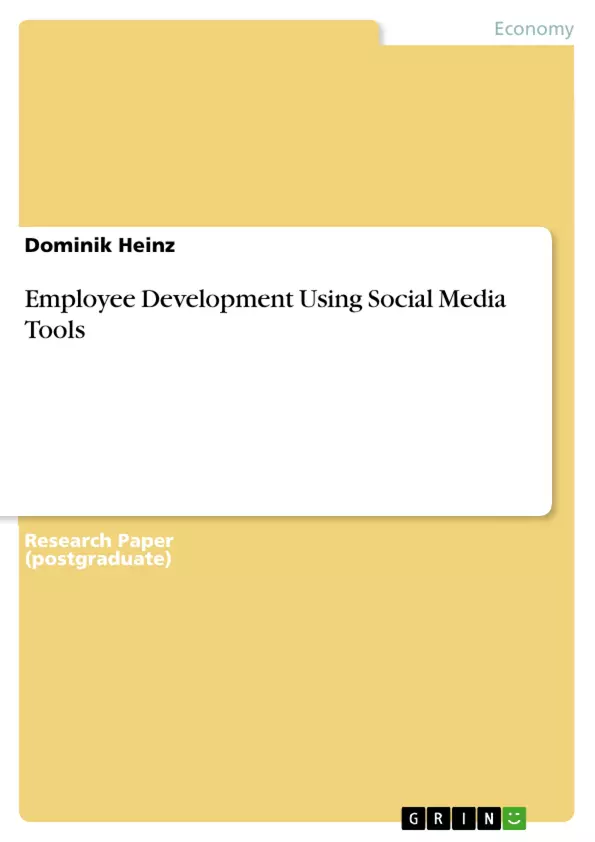This assignment summarizes the most important aspects of the topic employee devel-opment within the human resource management area, and shows whether the task employee development can be improved when performed with the support of social media tools. Social media tools are interactive, often web based tools which help individual employees to manage their knowledge, connect with each other, and communicate. This assignment will show the immensely positive impact of social media tools in specifically employee development and training processes.
Inhaltsverzeichnis (Table of Contents)
- Definitions
- Applied Terminology
- Social Media
- Definition
- History
- The Term Social Web
- The Term Wiki
- Collective Intelligence
- Employee Development
- Training
- Education
- Development
- Ramp-up
- Employee Development using Social Media Tools
- Training using Wiki based Knowledge Management
- Why Knowledge Management
- Knowledge Management using Wikis
- Reasoning
- Development using Social Webs
- Networking as a Key Attribute
- Networking for Career Boosts
- Networking using a Social Web
- Reasoning
- Issues and Limitations
- Social Web Tools
- Knowledge Management Tools
- Summary
Zielsetzung und Themenschwerpunkte (Objectives and Key Themes)
This assignment explores the potential of social media tools in enhancing employee development within the realm of human resource management. It aims to demonstrate how these interactive, web-based tools can facilitate knowledge management, foster collaboration, and improve communication among employees, leading to significant improvements in training and development processes.
- The impact of social media tools on employee development
- The role of social media in knowledge management and training
- The benefits of social networking for career advancement
- The challenges and limitations of utilizing social media for employee development
- The potential of social media to enhance employee performance and organizational success
Zusammenfassung der Kapitel (Chapter Summaries)
- Chapter 1: Definitions - This chapter introduces key terminology related to social media, employee development, and knowledge management, providing a foundation for the subsequent discussion.
- Chapter 2: Social Media - This chapter explores the concept of social media, tracing its historical development and defining its core characteristics. It discusses the evolution of the web from a read-only platform to a dynamic, interactive space characterized by user-generated content.
- Chapter 3: Employee Development - This chapter examines various aspects of employee development, including training, education, development, and ramp-up, laying the groundwork for understanding how social media tools can contribute to these processes.
- Chapter 4: Employee Development using Social Media Tools - This chapter delves into the application of social media tools for employee development, specifically focusing on their use in knowledge management through wikis and in fostering networking opportunities for career advancement.
- Chapter 5: Issues and Limitations - This chapter discusses potential challenges and limitations associated with utilizing social media tools for employee development, addressing concerns related to tool selection, data security, and potential misuse.
Schlüsselwörter (Keywords)
This assignment focuses on the application of social media tools, including wikis and social networking platforms, to enhance employee development and training within the context of human resource management. Key themes explored include knowledge management, collaborative learning, networking, career advancement, and the challenges and limitations of utilizing social media for these purposes.
- Quote paper
- Dominik Heinz (Author), 2009, Employee Development Using Social Media Tools, Munich, GRIN Verlag, https://www.grin.com/document/190433



